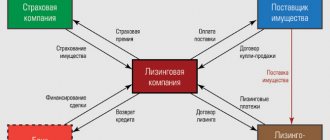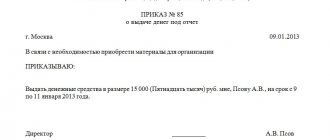Copywriters often use phrases like “the most important” and “the most important thing” both appropriately and inappropriately. Just for effect. "The most important rule of the text." “The most important thing in a commercial proposal” and so on.
Today we will talk about creating a unique selling proposition. And, we promise you, you will soon understand that a well-written USP is the most important thing in business. No kidding. Actually the most important thing. So important that everything else is just a pitiful reflection.
What is a USP and why is it needed?
A unique selling proposition (offer, USP, USP) is the main distinguishing mark of a business. Anyone. It doesn’t matter whether you sell modest writing services or develop entire neighborhoods with new homes.
The word “USP” refers to a competitive difference that others do not have. What sets you apart from your competitors. This is the only correct definition of USP.
The USP provides the client with a certain benefit. Or solves his problem. The types of benefits vary, but a unique selling proposition without a clear benefit to the customer is garbage.
Different. Benefit.
Two words on which everything rests.
Your unique selling proposition should differentiate you so radically that, all things being equal, if the client had to choose between you and a competitor, due to your having a worthy USP, he will choose you.
Do you understand how serious it is?
A few final thoughts
Creating a USP is a labor-intensive process, the result of which plays to your interests in the long term. What do you need to remember?
Don't try to please everyone
You need a clearly defined audience. Don't be afraid to alienate a few people along the way. Brands that target everyone end up attracting no one. Even large companies make the mistake of casting too wide a net to catch customers for fear of missing out. Believe me, women aged 25 to 54 are not the real target audience.
Differentiate yourself from your USP
The USP is to some extent a turning point for the client. Something unique, unexpected and meaningful that sets the product apart from the rest of the offerings on the market. A USP is the message that is conveyed to the audience to encourage them to try your product and switch from another brand to yours.
No matter what your USP is, it should be something that your competitors can't offer, or at least something that they aren't using as a marketing tool.
What do you want to highlight about your brand? In other words, what makes you truly different from other players in the market? Oddly enough, nine times out of ten the answer to these questions lies in small things.
But how can you find out what makes your product special? First of all, ask your clients. No one can articulate your benefits better than your clients. First, ask them why they chose your product. Second, ask why they continue to do business with you. Third, find out how they would explain your advantage over other manufacturers. Don’t reassure yourself that you already know everything about the exclusivity and benefits of your brand.
It is very important to “diagnose” disappointments. Ask people what frustrates them about your industry. If they remain calm and don't mention anything negative, ask them what irritates them about your competitors. If you get serious about analyzing and finding the problem, you will find ways to prevent disappointment with your USP.
The main problem of USP in Russian business
The trouble is that Russian business is criminally blind. From simple freelancers to huge companies, everyone wants to be the best. And you can’t be the best for everyone. You need to be different - that’s the whole point.
Hence the main problem - the refusal to create a USP in favor of the stupid desire to be the first and the best.
To show. no matter how weak and ill-conceived the creation of unique selling propositions can be, we will take our colleagues - copywriters. Take a look at their portfolio:
- Ideal texts
- Best Author
- Atomic copywriting
- Master of words
- And so on …
This kind of nonsense is all over the place. People just don't understand that this is not a USP. This is a great example of how not to advertise yourself. Instead of becoming different, everyone climbs the same mountain. To the top. The end result is nothing.
Who is on the bright side then?
Thinking authors with a bright USP. For example, with these:
- First on legal texts in RuNet
- Since 2010 I write only commercial proposals
- Any text – 3 hours after payment
- TOP copywriting at the price of regular texts
- Free consultation on Landing Page improvement for each client
- Free pictures for the article from paid photo stocks
Yes, not so loud, but very effective. The clients of these authors already see the difference and their benefits, and therefore are ready to pay.
Do you think it's any different in business? Nothing like that, even huge companies don’t really know how to create a unique selling proposition:
- A wide range of
- Big discounts
- Free service
- Low prices
- High quality
- Leaders in their industry
- And so on …
Moreover, many sincerely consider such a “gentlemanly” set to be sufficient to seduce a client.
And where is the fundamental difference here? Where is the “I’m different” signal here? He's gone. There is a set of standard advantages that every first company flaunts.
What’s most interesting is that each of the advantages can be developed into a good USP. For example, like this:
- A wide range of. 1300 models of alpine skis - the largest warehouse in Russia
- Big discounts - every Thursday 65% discount on your second purchase
- Free service - after purchasing a smartphone, we will install any programs for you for free within an hour
- Low prices - we sell any baked goods for 1 ruble after 18-00
- High quality - if even one part breaks, we will give you a new exercise machine
- Leaders in their industry – we have won the title “Best Taxi of Syktyvkar” for three years in a row.
Alas, only a few people use the idea of expanding template chatter into a full-fledged USP. It’s always easier to cliché standard phrases and then wonder: “Why don’t they buy?”
In order for your business to take off, you need a good USP. No catch. This is exactly what we will learn to compose today. We promise you will soon look at your capabilities with completely new eyes.
How not to confuse the USP with a slogan or offer?
When looking for examples, newcomers often confuse the USP with the company’s offer and slogan. Yes, the value proposition fits perfectly there, but that's another story.
Offers tend to change. It indicates the main benefit with a call to action. For example, the Diosa wedding salon - we will adjust the dress to your size for free and give you a branded case with a hanger.
USP in marketing declares the uniqueness of a product or service. Consider the famous M&M's value proposition: “Melts in your mouth, not in your hands.”
An advertising slogan is a characteristic of a brand in one short, bright, memorable phrase. We all remember Megafon’s slogan: “The future depends on you.”
They all overlap with each other, but solve different problems.
Rules for drawing up USP
There is a lot of rubbish written on the Internet about how to create a USP, but when you start to figure it out, you fall into a stupor. Too tricky and confusing. Yes, creating a sales proposal is not easy, but it is quite possible. Even for those who are not good at brainstorming.
In order to cope, we will cut the elephant into pieces. Learn in stages. It will be easier and clearer this way. Let's start.
Stage one - awareness of yourself and competitors
The first step is to answer the list of questions below as completely as possible. You can even print them out and then write the answers next to each one. Don't be lazy, this is an important stage. So, a list of important questions.
- What are we doing?
- Our strengths
- Our weaknesses
- Do we have any differences from our competitors?
- Can difference be created with effort?
- What interesting USPs do your competitors have?
- Is it possible to create something more interesting based on their USP?
Ideally, you should have a fairly large list that you will then rely on. It is worth remembering that there are two types of proposals: without effort and with effort.
An effortless USP is something you already own. For example, you really have the largest selection of alpine skiing in Russia. Or this is not the first time you have won the title of “Best Manufacturer of the Year”.
A USP with effort is something you can do to create a strong competitive advantage and unique value proposition. For example, promise that you will deliver a taxi in 5 minutes or the trip will be free. And this despite the fact that now the average waiting time is 7 minutes.
A USP with effort is always more difficult to implement, but its effect is usually greater: a person sees his direct benefit and is ready to test you.
Yes, you will have to sacrifice something (money, time, profit growth), but you will also raise the bar of advantage above others. Consequently, in the future you will receive new customers, since your competitors will not be able or will not want to raise this level even higher.
Stage two - awareness of customer needs
A leaf again. Surveys again, but now about clients:
- Who is our main client? Describe your target audience
- What does our ideal client want?
- What customer needs do we actually solve?
- What could we do, but we don’t solve it?
- How can we win new customers?
A small recommendation:
Put yourself in your client's shoes . Why does he choose you? Do they expect something specific from you: guarantees, more convenience, reliability, savings, or something else?
What is valuable and not valuable to your customers? Maybe they are ready to pay any money to improve their status? Or are they frugal and buy the cheapest thing they can? Clearly draw yourself a portrait of the mass target audience. You can even conduct surveys to understand the real needs of the client.
Why do many clients go to competitors? What do the latter take? Do you have the resources to offer your clients the same or more?
Understanding the needs of the client is the most important condition for creating a working USP. If you can correctly understand the buyer and his desires, you will be able to offer something truly interesting.
Stage three - creating a USP
Now take both leaves and find all the intersecting points. For example, in the first task (self-awareness), you found out that you could give each customer of hallway furniture a dining table. And no one is doing this yet.
In the second task (client needs), you realized that your target audience is young families and people with below-average incomes who would not mind getting something for free.
Bottom line: you can easily make an offer: Each client will receive a good-quality kitchen table as a gift
If you spend enough time preparing to write a unique selling proposition, there can be dozens of such intersecting points. All you have to do is turn on your creativity and create as many proposals based on them as possible.
Created? Wonderful. Now is the time to choose the best USP.
To do this, you can conduct surveys among employees, clients, post surveys on social networks, and so on. Once the tests are done, you should see the influencer. As a rule, it is noticeable immediately.
Can you have multiple USPs?
Yes, it may well be. And yet some main sentence will have to be chosen, and the rest will be amplifiers of the sentence. And remember that your unique selling proposition cannot be changed every three months. This will last for years, so make your choice seriously right away.
Ithymology of the words commodity and product
First, a few words about goods and their products and their differences.
The first thing that probably comes to mind is that a product is a concept from somewhere on the market or from trade, while it is difficult to say about the origin of the word “product”. In general, this is how it is... In the Slavic group of languages, the word “product” is borrowed from the Turkic languages. Vasmer's etymological dictionary of the Russian language indicates that in Uyghur, "tavar" means "property or livestock." In modern Tatar, Bashkir, Kazakh and a number of other languages, “tauar” has a clear meaning to us: “commodity” - any thing that participates in a free exchange for other things.
"Product" comes from the Latin prōductum "produced" or from producere "to bring out, produce, that which has been produced, created or obtained by some process or action." Please note that in the essence of what is called a product, there is no indication of the purpose - it was produced for the purpose of sale or exchange.
Recommendations for creating a USP
Carefully monitor your competitors' offers. Firstly, this is a huge scope for creativity and ideas. Secondly, it will help you not to repeat other people's sentences.
Be specific . Your USP should be as specific as possible. No general phrases. If “A cup of coffee is given to every gas station visitor,” then this is precisely a cup of coffee, and not “pleasant bonuses.” If “everything is 49 rubles”, then this is exactly 49 rubles, and not “the lowest possible prices”.
Keep it simple . Your USP should be as simple as possible - all clients should immediately understand it and immediately see a clear benefit.
Do not contradict the interests of the target audience. If clients visit your salon because it is fashionable and prestigious, then there is no need to lure them in with low prices. Kill the status.
Don't lump everything together. There is no need to try to write out the USP on 20 sheets. Everything should be very simple: 1-3 phrases. If you really can’t wait to describe all the advantages in detail, then there are separate texts for this. In the USP you highlight only the main thing, the essence, but if you want it, you write it down somewhere separately.
We hope this article will make it easier for you to create a truly strong unique selling proposition. All the introductory information for this is there – you just need to sit down and do it.
We promise that once your USP crystallizes into something concrete and profitable, you will immediately notice a positive change. Tested thousands of times and proven by business laws.
Order the creation of a USP
Other interesting
The USP concept formulated by R. Reeves
Once again and in contrast.
Rosser Reeves spoke about advertising. R. Reeves contrasted the proposed concept of “USP” with traditional “showcase” advertising, in which, behind the abundance of beautifully formulated phrases about the product, there is absolutely no basis, nothing that could separate and elevate the advertised brand from a number of similar products with similar consumer properties. Reeves laments that USP is widely misunderstood. He outlined three basic rules for advertising, which encapsulated his ideas about USP:
In fact, USP is a precise term and deserves a precise definition. So, let's start with the fact that USP is certainly a combination of three components:
- Every advertisement must offer the consumer a benefit, not just words or commercials. Every advertisement should tell the viewer: “Buy this product in order to obtain this specific benefit for yourself.”
- The offer must be something that the market does not offer.
- The offer must be strong enough to reshape the consumer's perception.
Rosser Reeves "Reality In Advertising" Alfred A. Knopf. New York 1961. ISBN 10: 0394442288
Today, understanding what the founder of correct advertising communication formulated, specialists fill each advertising message with a USP. The only question is how accurately marketers understand the need and, together with sellers, correctly formulate the benefits, as well as how well advertisers were able to convey all this to the consumer. If you fail, the result is a low-quality advertisement with an unclear USP.










